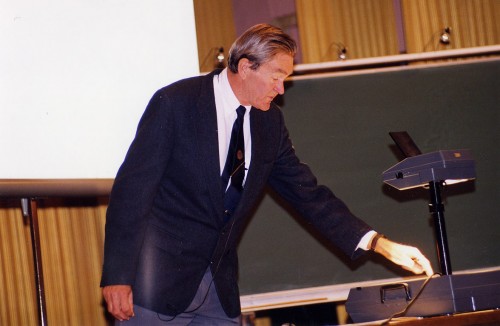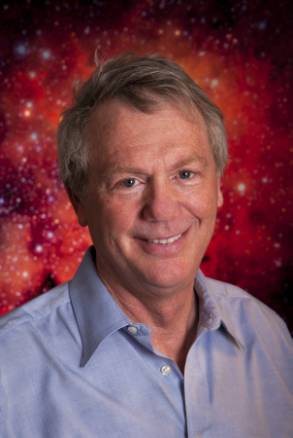According to the jury, the Wolf Prize in Physics is awarded this year to two researchers who have made fundamental contributions to understanding the structure of the universe at the smallest and largest scales

The Wolf Prize in Physics is awarded this year to two researchers who have made fundamental contributions to understanding the structure of the universe at the smallest and largest scales: James Bjorken from Stanford University, USA for predicting the scaling phenomenon in deep inelastic scattering, which led to the identification of point components within the proton and Robert Kirchner from Harvard University, USA - for the breakthrough to the study of the universe with the help of supernova stars, based on his observations and insights.
The discovery that led to the discovery of quarks
Here are the award committee's reasons for choosing Bjorken: "The strong force enables the existence of protons and neutrons and is what holds them together inside the nuclei of atoms. It is also responsible for more than 99% of the mass of atoms. Bjorken made a crucial contribution to understanding the nature of the strong force. In 1967 Bjorken predicted that electrons accelerated to high energy in an accelerator and then violently colliding with protons would behave as if they had come into contact with point-charged particles moving within the proton almost freely. This phenomenon was called scaling."
"At the time, it was a radical idea that completely contradicted the accepted intuition at the time. Nevertheless, experiments conducted in 1968/69 at the Stanford Linear Accelerator in California provided dramatic confirmation of Bjorken's prediction. The heads of the experiments, Jeremy Friedman, Richard Kendall and Richard Taylor, were awarded the Nobel Prize in Physics in 1990, for the experimental proof of the existence of the quarks, which are the point components of the proton."
"Following the experimental confirmation of scaling, theorists began to look for a fundamental quantum theory that explains the phenomenon. In 1973, David Gross, Frank Wilchek and David Pulitzer discovered that a theory known as quantum chromodynamics (Quantum Chromodynamics - QCD) has the required property, i.e. it predicts that the force between quarks gets smaller as they get closer to each other, so that at short distances they behave as if were free This property is called "asymptotic freedom". In 2004, Gross, Wilchek and Pulitzer were awarded the Nobel Prize in Physics for their discovery. Comprehensive experiments have confirmed that QCD is indeed the fundamental theory describing the strong force."
"The accepted view today is that all the fundamental forces in nature, perhaps with the exception of gravity, are described by theories whose mathematical structure is similar to QCD. These theories are called non-Abelian calibration theories. In this sense, looking back, Björken's scaling not only led to the experimental discovery of quarks, but also pointed the way towards the mathematical structure that describes all fundamental forces."
Supernovae as a tool to measure the expansion of the universe

"Robert Kirchner dedicated his professional life to research at the cutting edge of cosmology and the study of supernova stars. He created the group, the scientific infrastructure and the research directions that allowed his research students and postdoctoral colleagues to discover the acceleration in the rate of expansion of the universe. This discovery is a fundamental milestone in physics and astronomy and it poses a supreme challenge to theorists."
"In 1974, together with John Kwan, Kirchner invented a method for measuring the expansion rate of the universe based on observations of supernova stars. Many difficult barriers had to be overcome, especially the redshift of the stars due to the effect of intergalactic dust, before the supernova stars could be used to measure cosmological distances with sufficient precision to discern the change in the rate of expansion of the universe. In the 80s, Prof. Kirchner's research into monitoring the explosions of supernova stars using different wavelengths was the most extensive research of its kind in the world and resulted in the scientific community recognizing type Ia supernova stars as an optimal tool for studying the universe at great distances. It was an essential step towards the next stage - the discovery of the increase in the rate of expansion of the universe."
Kirchner also headed a research program in which the Hubble Space Telescope was used to measure the spectra of Type Ia supernova stars in the ultraviolet region. The results made it possible to accurately calibrate the effect of redshift on the light of supernova stars at different distances. All supernova research groups are now using this vital data.”
"Kirchner directed the establishment of the research team HIGH Z SUPERNOVA TEAM, one of the two research groups credited with the discovery of the acceleration of the expansion of the universe. He gathered around him a group of first-class research students, such as Brian Schmitt and Adam Reiss, and led them towards practical and efficient research methods for tracking type Ia supernova stars, in a way that would enable reliable discovery of the result that everyone was expecting at the time, namely the slowing down of the expansion of the universe. Particularly important was Kirchner's insistence that the data be collected in more than one color, in order to allow separation between the effects of dust and cosmic motion in the analysis of the data on the intensity and color of the light. "

2 תגובות
The title indicates a weak force, according to the content of the article this is the strong force.